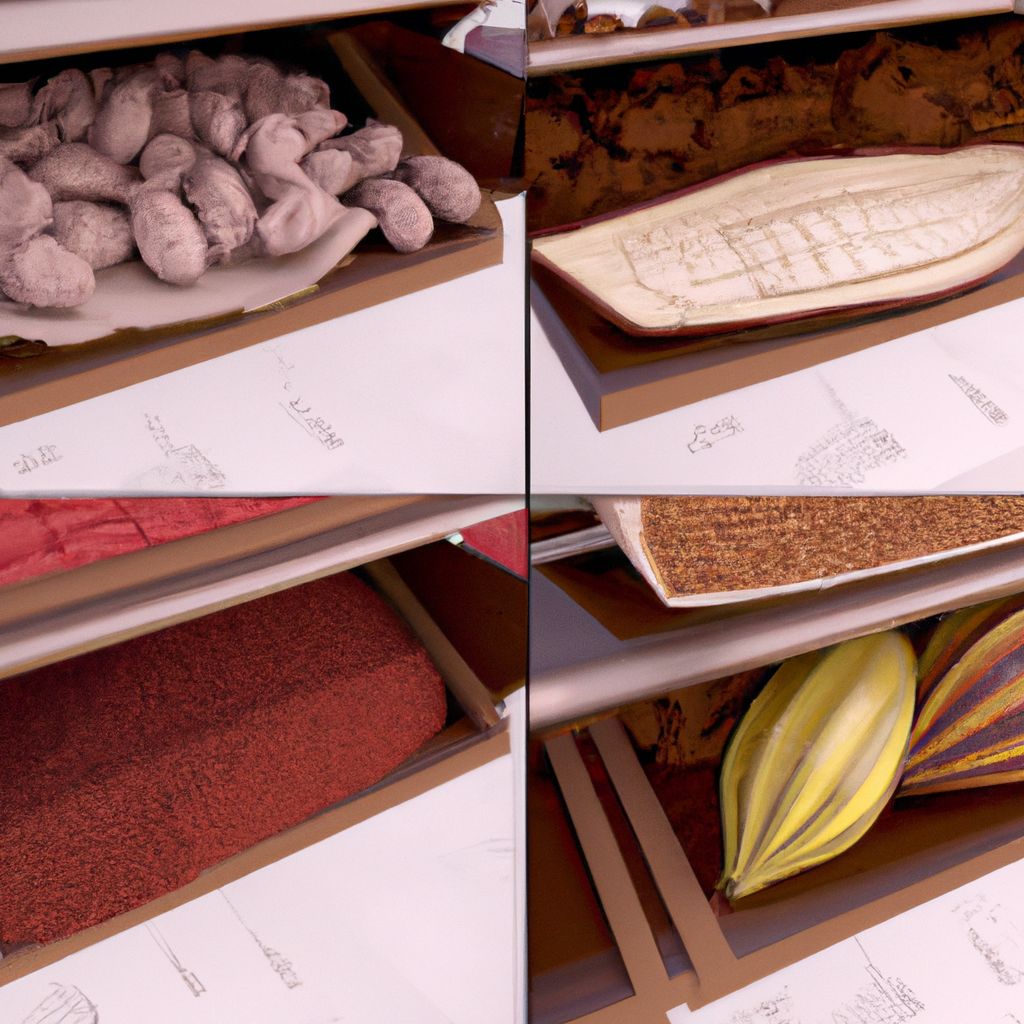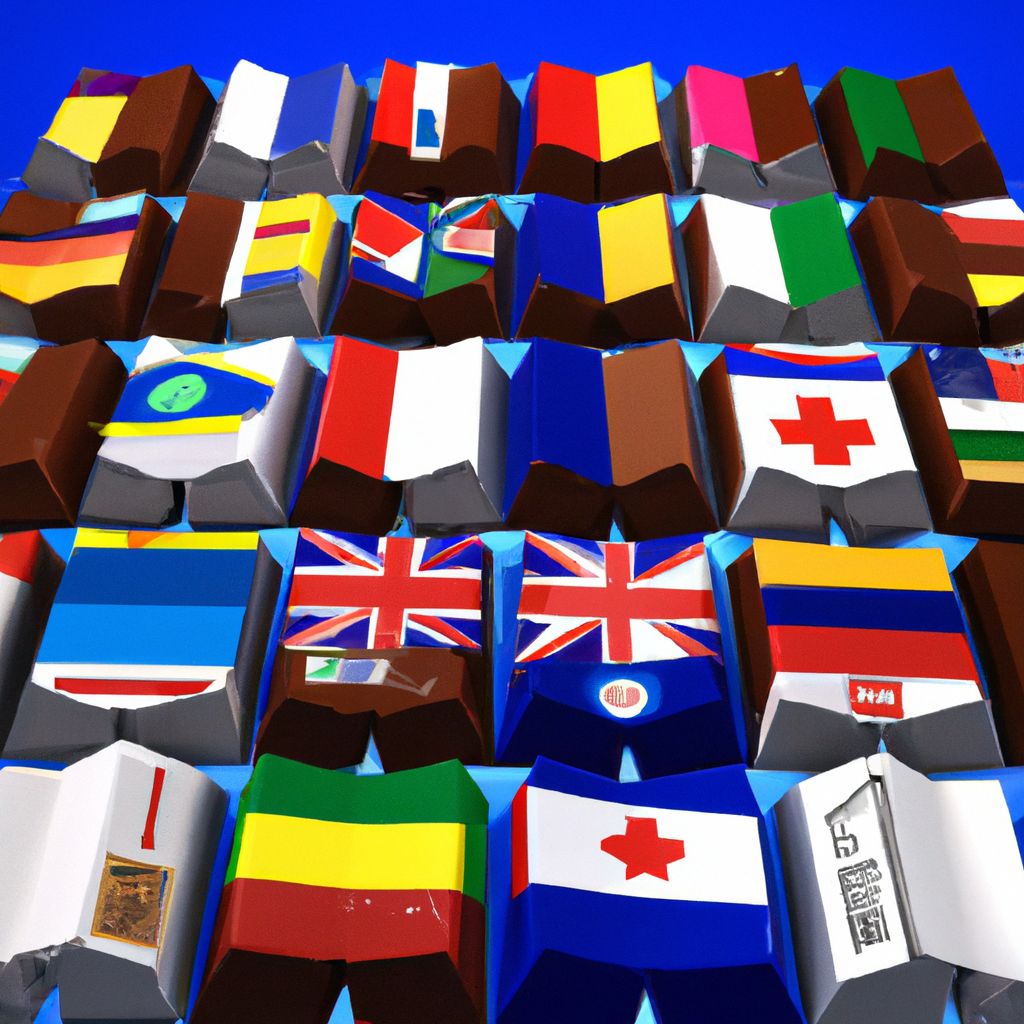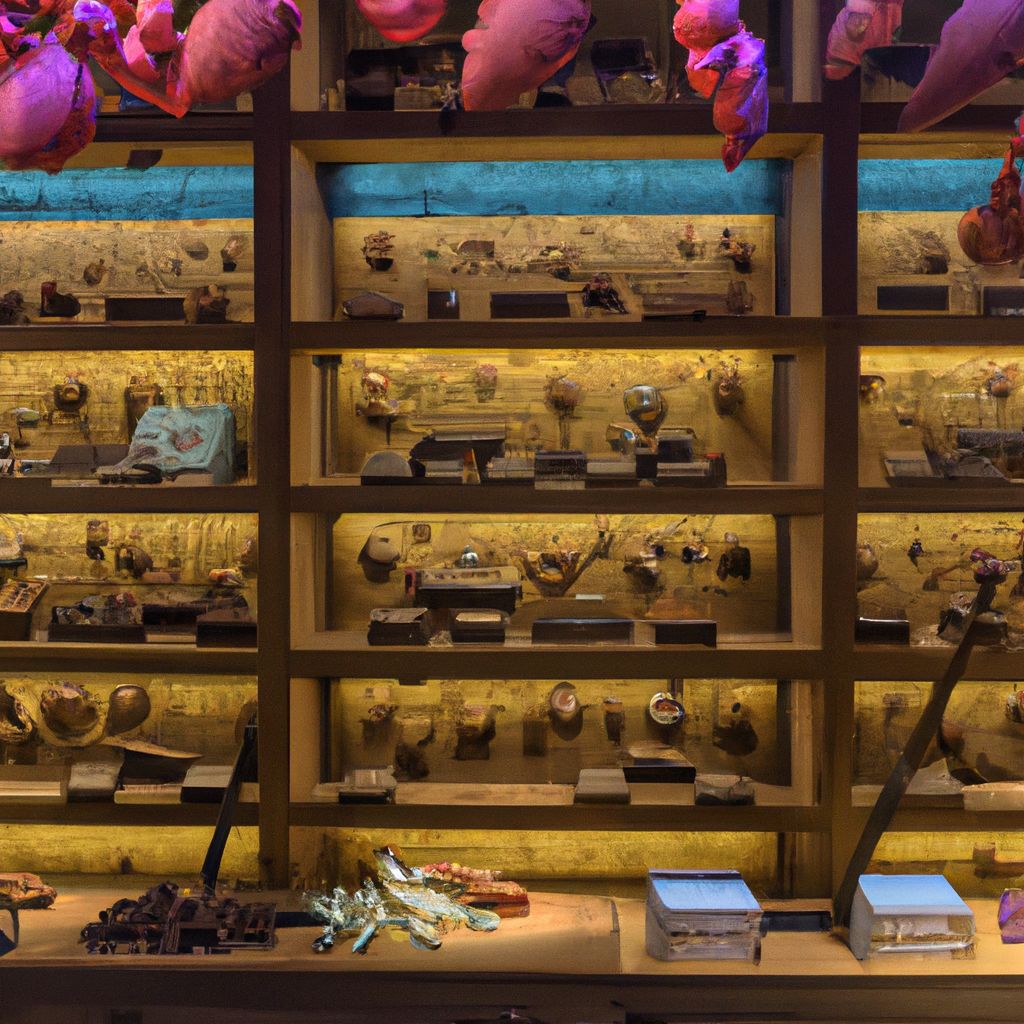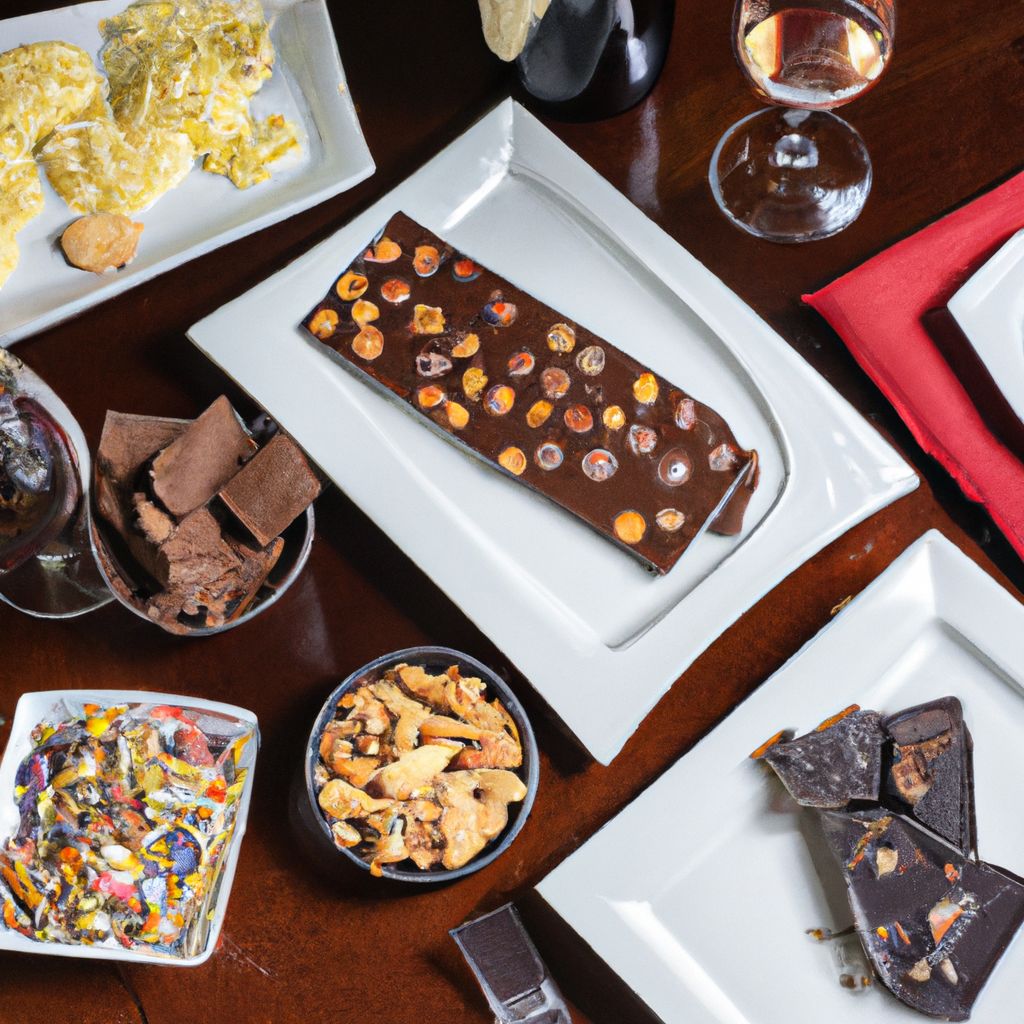- Introduction to the World of Chocolate
- Understanding the Origin of Chocolate
- Types of Chocolates
- Process of Making Chocolate
- Health Benefits of Chocolate
- Popular Chocolate Brands Around the World
- Exploration of Gourmet Chocolates
- Different Ways to Enjoy Chocolate
- Chocolate Pairings with Wine and Other Foods
- World's Most Famous Chocolate Festivals
- Conclusion: The Endless Joy of Chocolate
Introduction to the World of Chocolate

Imagine a world imbued with the rich, velvety aroma of cocoa, where every corner unfolds a new story of indulgence, and where every bite is a journey of sensory delight. Welcome to the fascinating world of chocolate. This blog post is a gourmet's guide to exploring the many facets of this beloved treat, from its historic origins to its modern-day decadence.
According to the World Cocoa Foundation, about 3 million tons of chocolate are consumed globally each year. It's not just a sweet treat. For many, chocolate is a passion, an obsession, and even an art form. As a result, it's an industry that's worth over $130 billion worldwide.
But, what makes chocolate so universally adored? Is it the variety of flavors, the smooth texture, or the way it melts in the mouth? Perhaps, it's a combination of all these factors. So, let's dive deeper into the world of chocolate and embark on a gourmet adventure like no other.
Understanding the Origin of Chocolate

Before we delve into the opulence that chocolate represents today, it's essential to understand its humble beginnings. The story of chocolate begins with the cacao tree, or Theobroma cacao, which aptly translates to 'food of the gods' in Greek.
According to the Smithsonian Institute, the ancient civilizations of Central America, including the Maya and the Aztecs, were the first to recognize the value of cacao. They believed that the cacao seed was a heavenly gift and used it both as a currency and a significant component in sacred rituals.
The cacao bean has played a pivotal role in cultural, economic, and gastronomic contexts throughout history.
However, the transition from cacao to chocolate wasn't made until the Spanish Conquistadors brought cacao back to Europe in the 16th century. It was here, in the opulent courts of Spain, that sugar was added to cacao for the first time, creating a beverage that was considered a luxury.
Fast forward to the 19th century, and the invention of the chocolate bar catapulted this gourmet ingredient into a new era of popularity. With the advent of milk chocolate by companies like and , chocolate became more accessible and loved worldwide.
Types of Chocolates

Today, chocolate has evolved into a plethora of types, each with its unique characteristics and flavor profiles. The three primary varieties are dark chocolate, milk chocolate, and white chocolate. However, other types, like ruby chocolate and raw chocolate, are also carving a niche for themselves in the gourmet world.
| Type | Description |
|---|---|
| Dark Chocolate | Composed primarily of cocoa solids and sugar, with little to no milk. It has a strong, bitter taste and is considered the purest form of chocolate. |
| Milk Chocolate | Contains milk or milk powder in addition to cocoa solids and sugar, resulting in a creamy, sweet flavor. |
| White Chocolate | Made from cocoa butter, sugar, and milk, but contains no cocoa solids. It has a rich, creamy texture and a sweet flavor. |
| Ruby Chocolate | A relatively new addition, characterized by its naturally pink color and a fruity, slightly sour taste. |
| Raw Chocolate | Made from unroasted cacao beans, it retains a higher amount of nutrients and has a more complex flavor profile. |
Each type of chocolate offers a unique sensory experience and is suited to different culinary applications. As you explore the world of chocolate, you'll discover the one that resonails with your palate the most.
Process of Making Chocolate

From the cacao tree to a gourmet chocolate bar, the journey of chocolate is a complex process that involves a series of meticulously controlled steps. Understanding this process can deepen our appreciation for the artistry and craftsmanship that goes into making every piece of chocolate.
- Harvesting: It begins with the harvesting of cacao pods from the tree. Once ripe, they are cut down and opened to extract the cacao beans.
- Fermenting: The beans are then left to ferment, a crucial step that helps develop the beans' flavor.
- Drying and Cleaning: After fermenting, the beans are dried and cleaned, preparing them for roasting.
- Roasting: The beans are roasted to bring out the classic chocolate flavor. The temperature and duration of roasting can significantly affect the final taste.
- Grinding and Conching: The roasted beans are ground into a paste called 'chocolate liquor.' This paste is further refined in a process called conching, which develops the texture and flavor.
- Tempering and Molding: The chocolate is tempered to give it a shiny appearance and a smooth texture. It is then poured into molds and cooled to form the final product.
Each step in the process, from the type of cacao bean used to the time spent on conching and tempering, contributes to the quality and taste of the final chocolate product.
Health Benefits of Chocolate

Aside from its delectable taste, chocolate, especially dark chocolate, has been associated with various health benefits. Numerous research studies have suggested that chocolate can be a part of a healthy diet when consumed in moderation.
- Rich in Antioxidants: Dark chocolate is loaded with antioxidants, including flavonoids and polyphenols. A study published in the Journal of Agricultural and Food Chemistry found that, gram for gram, cocoa contains more antioxidants than most fruits.
- Heart Health: Regularly eating dark chocolate may improve heart health. A large study of thousands of people in Sweden found that eating chocolate was linked to a lowered risk of heart disease and stroke.
- Brain Function: The flavonoids in chocolate may help improve blood flow to the brain. Some research suggests that chocolate could improve brain function and delay age-related mental decline.
- Blood Pressure: The flavonoids in dark chocolate can stimulate the lining of arteries to produce nitric oxide, helping to relax and reduce resistance to blood flow, thereby reducing blood pressure.
While the health benefits of dark chocolate are promising, it is important to remember that chocolate is also high in fat and sugar. Therefore, it should be enjoyed as part of a balanced diet. Always opt for chocolate with a high percentage of cocoa (70-85%) and consume it in moderation.
Popular Chocolate Brands Around the World

In the global market, numerous chocolate brands have made their mark by offering high-quality and innovative products. These brands range from mass producers who have been in the business for over a century, to small artisanal chocolatiers who are pushing the boundaries of chocolate making. Here are a few notable ones:
| Brand | Country | Known For |
|---|---|---|
| Ferrero Rocher | Italy | Creating a unique blend of chocolate and hazelnut, known for their iconic gold-wrapped chocolates. |
| Godiva | Belgium | Producing premium chocolates and truffles with a rich and smooth texture. |
| Valrhona | France | Supplying high-quality, gourmet chocolate to top chefs and chocolatiers worldwide. |
| Cadbury | United Kingdom | Being one of the oldest chocolate brands, loved for their creamy milk chocolate bars. |
| Teuscher | Switzerland | Making some of the world's finest chocolates and pralines, using traditional recipes. |
| Amul | India | Being a leading dairy cooperative, known for their affordable and widely loved chocolate range. |
| See's Candies | United States | Offering a broad range of candies and chocolates, made using traditional methods. |
| Kinder | Italy | Innovating with a variety of chocolate products, best known for their Kinder Surprise eggs. |
These brands are renowned for their commitment to quality and their unique approach to chocolate making. They continue to shape the global chocolate landscape, making it a diverse and dynamic field.
Exploration of Gourmet Chocolates

Gourmet chocolate represents the pinnacle of the chocolate world, where quality ingredients, skilled craftsmanship, and innovative flavor combinations come together to create an unforgettable experience for the senses. Gourmet chocolates often feature high-quality cocoa, minimal additives, and unique flavors like chili, lavender, sea salt, and truffle mushrooms.
There's an increasing trend towards 'bean-to-bar' chocolate makers who control every step of the chocolate-making process, from sourcing the cacao beans to crafting the final product. This allows them to ensure the highest quality and ethical standards. Brands like Amedei in Italy, Patric in the U.S., and Michel Cluizel in France are just a few examples of this trend.
Bean-to-bar chocolate makers are revolutionizing the industry by focusing on quality, sustainability, and transparency.
Another emerging trend in the gourmet chocolate world is the focus on single-origin chocolates. These are made from cacao beans from a specific region or even a particular plantation. This focus allows the unique flavor profile of the cacao from that region to shine through. Brands like Domori and Dandelion Chocolate have a great selection of single-origin chocolates.
Exploring the world of gourmet chocolates can be a delightful journey. From tasting the subtle differences in single-origin chocolates to discovering unexpected flavor combinations, there's a lot to excite the palate of any chocolate lover.
Different Ways to Enjoy Chocolate

Chocolate is an incredibly versatile ingredient that can be enjoyed in numerous ways. Whether you're a purist who prefers a simple chocolate bar or a gourmet who loves to experiment, there's a way for everyone to enjoy this delightful treat.
- Chocolate Bars: This is the most common way to enjoy chocolate. From milk to dark and everything in between, the variety is endless.
- Chocolate Truffles: These are a type of chocolate confectionery, traditionally made with a chocolate ganache center coated in chocolate, cocoa powder, or chopped toasted nuts.
- Hot Chocolate: A warm, comforting drink made by melting chocolate or cocoa powder in hot milk or water.
- Chocolate Desserts: Chocolate is a key ingredient in numerous desserts like cakes, brownies, mousses, and fondants.
- Chocolate in Savory Dishes: Chocolate can also be used in savory dishes. For example, it's a key ingredient in Mexican mole sauce.
- Chocolate Pairings: Chocolate can be paired with a variety of foods and drinks to enhance its flavor. Some popular pairings include chocolate and wine, chocolate and cheese, and chocolate and fruit.
The possibilities are endless when it comes to enjoying chocolate. It's all about experimenting and finding what works for your palate.
Chocolate Pairings with Wine and Other Foods

The art of pairing chocolate with other foods and beverages is a sensory delight, revealing new layers of flavors and enhancing the overall tasting experience. With a multitude of flavors found in both chocolate and wine, finding the perfect match can be an exciting journey of discovery.
- Dark Chocolate and Red Wine: The robust flavors of dark chocolate, with its intense cocoa content, pair well with full-bodied red wines such as Cabernet Sauvignon or Zinfandel.
- Milk Chocolate and Lighter Wines: The creamy sweetness of milk chocolate goes well with lighter wines like Pinot Noir or Merlot, which balance the chocolate's sweetness without overwhelming it.
- White Chocolate and Sweet Wines: The sweet, buttery flavors of white chocolate pair nicely with dessert wines like Ice Wine or Moscato.
Similarly, chocolate can be paired with a variety of foods to bring out a symphony of flavors. For instance, the nuttiness of almonds, the sharpness of blue cheese, the tanginess of strawberries, or even the smokiness of bacon can complement the rich, sweet flavor of chocolate.
The key to successful chocolate pairing is balance. The flavors should complement, not compete with each other. Experiment with different combinations and find the ones that delight your palate the most.
World's Most Famous Chocolate Festivals

For the ardent chocolate lover, there's nothing more exciting than attending a chocolate festival. These events celebrate all things chocolate, from tastings and pairings to demonstrations by world-renowned chocolatiers and chocolate-making workshops. Below are some of the most famous chocolate festivals around the world:
| Festival | Location | Description |
|---|---|---|
| Salon du Chocolat | Paris, France | The world's biggest event dedicated to chocolate and cocoa, featuring over 500 participants from 60 countries. |
| Eurochocolate | Perugia, Italy | An annual event that transforms the historic city of Perugia into a chocolate lover's paradise. |
| Chocoa | Amsterdam, Netherlands | A festival that aims to increase the market for 'good cocoa and better chocolate' through tastings, lectures, and a chocolate market. |
| Ghirardelli Chocolate Festival | San Francisco, USA | Offers a wide variety of chocolate-themed activities, including a chocolate school, chef demonstrations, and a chocolate and wine pavilion. |
| St. Stephen's Chocolate Festival | St. Stephen, Canada | Located in Canada's chocolate town, this festival includes a chocolate-themed dinner and a chocolate museum tour. |
Whether you're a casual chocolate lover or a dedicated gourmet, attending a chocolate festival can be a rich, immersive experience. It's a great way to deepen your appreciation for chocolate, learn about its production, and of course, taste a wide variety of delicious treats.
Conclusion: The Endless Joy of Chocolate

From its ancient origins in the Americas to its current status as a global gourmet delight, the journey of chocolate is as rich and complex as its flavor. Whether it's the simple pleasure of biting into a chocolate bar, the joy of pairing it with your favorite wine, or the thrill of exploring exotic flavors at a chocolate festival, the world of chocolate offers endless possibilities for enjoyment.
As the chocolate industry continues to evolve, with a growing focus on sustainability, quality, and innovation, there's so much more to look forward to. So, here's to the endless joy of chocolate - may it continue to delight our senses, lift our spirits, and bring us together in sweet harmony.


